The PlayStation 2 turned twenty years old recently – and for some of us, that’s an event that’s bound to make us feel old. I got my very first PS2 on its European release – an early 18th birthday present to make up for the fact that my original PlayStation and modest game catalogue had been stolen from my house a few months earlier.
That first PS2 has long since died, but I do have a shiny silver replacement that’s still going strong, not to mention US and JP PS2s gathering dust in the back of a cupboard just in case I want to play imported games. It should come as no surprise that I also have a massive catalogue of games – many of which I haven’t even got around to playing yet!
With that in mind, it only felt right to celebrate the PS2’s big anniversary with a selection of twenty(ish) games that I’ve enjoyed playing over the years. This is by no means supposed to be a list of the best games on the PS2, but rather a sample of the titles that stole away many hours of my life.
If an ‘obvious’ title isn’t included, it’s likely to be for one of the following reasons:
- I haven’t properly played it yet (DQ VIII).
- I’ve only played its port or remake on another system (Tales of the Abyss).
- I didn’t enjoy it very much.
So, without further ado, onto the list!
1. Okami
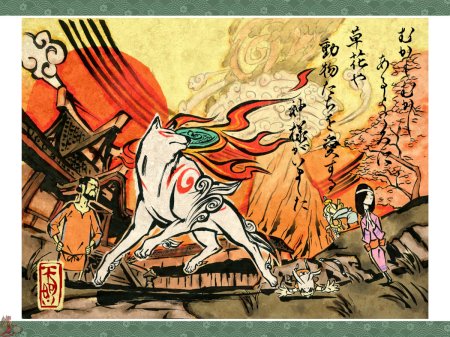
This delightful game remains one of my all-time favourites – so much so that I also own copies of the HD remaster on both PS3 and PS4. A title that I sometimes refer to as the ‘best Zelda game’, Okami is an action-adventure game that puts you in the paws of Amaterasu, a sun goddess embodied in the form of a white wolf. Amaterasu is also the master of the Celestial Brush, able to learn different brush strokes that can be used to affect the world around you – everything from planting trees and blossoming flowers, to setting bombs and slowing down time.
Along with its solid gameplay mechanics, Okami is also an absolutely beautiful game. The story draws heavily from Japanese folklore, presented in a world straight out of a Japanese wood-cut painting. Few things in gaming are as uplifting as restoring a Celestial Sapling and watching the world around you bloom into beauty

When it comes to the gameplay mechanics, Persona 3 Portable is definitely a more polished version of this title, as is the sequel Persona 4. And yet, it’s Persona 3 FES that sparked my interest in the series, and it remains a firm and nostalgic favourite to this day. Also, it’s the only version to include “The Answer” chapter, a follow-up to the main game that sees the robot Aigis take on the lead role.
Unlike the earlier Persona games, which were closer to the traditional SMT dungeon-crawling style, Persona 3 mixed things up a bit by introducing the series’ now traditional mix of elements. By night, you explored the mysterious dungeon of Tartarus, hoping to ascend its floors without dying to a cheap one-hit-kill attack. But by day, you were free to live the life of a high school student, studying, having fun, and trying to establish ‘Social Links’ – bonds of friendship with the people around you. This mix of RPG and visual novel style elements remains a favourite combination of mine, and to this day I’m always on the lookout for similar games.
3. .hack//INFECTION – QUARANTINE
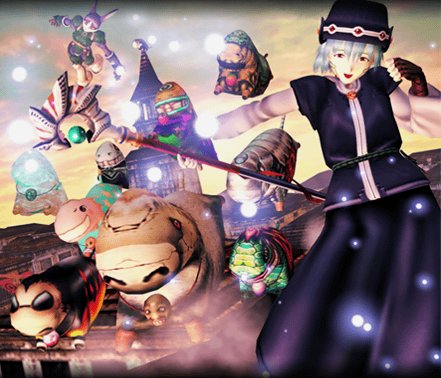
The first ‘cheat’ entry in the sense that it’s four separate games, but nonetheless the first four .hack games form a single continuous narrative. Released as part of a franchise that spanned anime, manga, video games and even an obscure TCG, this quadrilogy puts players in the shoes of Kite, a newbie player in the MMORPG “The World”. When Kite gains possession of an item that exists outside of the game’s normal parameters, he becomes a target for both sysadmins and a mysterious dark force lurking deep within the game’s code.
Although not without its weaknesses, I found the original .hack quadrilogy utterly absorbing, so much so that I even dedicated my days to completing the game’s most tedious quests. Although not an MMO in itself, it makes a fair stab at simulating one whilst still providing a satisfying single-player experience. I’m not sure how it would look to my HD-attuned eyes these days, but back then I loved the look of the game, revelling in the attention to detail. Couple that with the delightful eeriness of stumbling across the weird, out-of-place regions deep within the game, and you get a world (pun intended) that I had no problem exploring for hours on end.
.hack is of course also the series that brought us one of the best ever in-game mounts – the sentient piglike grunties.

Gameplay-wise, Atelier Iris 2 is probably the most polished of the trilogy, but it was the original game that sparked my interest in the Atelier series as a whole.
More of a traditional JRPG than its Atelier siblings, Atelier Iris combined synthesis with story, following the adventures of alchemist Klein Kiesling after his encounter with bounty hunter Lita Blanchimont. The stirring opening theme had me hooked, and from then on I was absorbed in the game’s world, merrily gathering Mana and crafting all sorts of items. A couple of tough bosses did necessitate some grinding, but overall it was a fun experience that I will definitely revisit some day. Not to mention the fact that this game also marked my first exposure to the now-infamous “Barrel”.
5. Mana Khemia
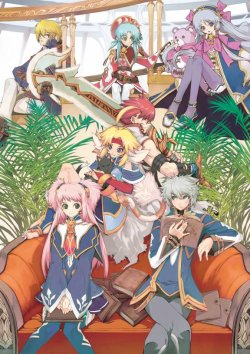
Although considered part of the main Atelier franchise, the Mana Khemia games have a different flavour, set in a magical school where alchemy is on the curriculum. The original Mana Khemia follows our intrepid hero Vayne Aurelius through his time at the school, as he makes friends, explores the world, and eventually learns the truth about himself.
Although a bit repetitive in places, overall Mana Khemia offers an enjoyable mix of school assignments and alchemic discovery that will keep you coming back for “just one more” week of alchemy school. I’m ashamed to say, however, that although I’ve owned the sequel for years and fully intend to play it ‘soon’, I’ve yet to get around to trying it.
6. Odin Sphere
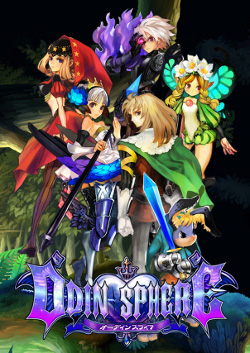
It may have been Muramasa that got me interested in Vanillaware games, but Odin Sphere swiftly followed. This aesthetically pleasing action game told the interwoven stories of five very different characters – each of whom offered a unique gameplay experience.
Although occasionally hit by a difficulty spike or one too many appearances from the same boss, Odin Sphere is still charming and entertaining in equal measure. Once you’ve worked through each character’s individual story and seen their unique perspective on events, you get the chance to essentially build your own ending, by deciding who takes on which part of the final chapter. There’s certainly a lot of replay value to be had here.
7. Kingdom Hearts II
I have a confession to make. I don’t much like the original Kingdom Hearts – in fact I found it tedious and frustrating to the point of nausea. I had a stab at the port of Chain of Memories, but ultimately abandoned in favour of the point where the franchise starts getting good – Kingdom Hearts II.
Even though this game also marks the point where the story disappears up its own backside in terms of convolutedness, it also sees a drastic improvement in gameplay. With new Disney Worlds, intriguing new characters, and a battle system that’s actually fun to play, Kingdom Hearts II stands head and shoulders above its predecessors.
Of course, the series then became mired in spin-offs for years before finally delivering Kingdom Hearts III, but that’s a story for another time.
8. Shin Megami Tensei Digital Devil Saga 1-2
Since both games count as one overarching story, I’m going to include them together here. The DDS duology were actually my first ever SMT games, and thanks to them, I got hooked on the series and its many spin-offs.
DDS plays out differently to a mainline SMT game in that it’s not about recruiting and negotiating with demons – instead, your party members transform into demons and devour their foes. Nonetheless, a lot of classic elements are there – difficulty spikes, ugly monsters to fight, plot twists, and the absolute necessity to target an enemy’s weakness instead of just hoping spamming regular attacks will see you through. Yes, the encounter rate is a bit on the high side, but the game is still absorbing and addictive, with locked areas and hidden bosses providing decent replay value. The soundtrack is worth a mention too, especially the battle and opening themes.
9. Shin Megami Tensei Nocturne
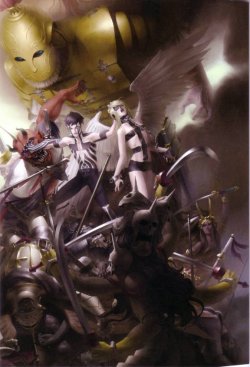 After DDS, I immediately turned my attention the one mainstream SMT in my collection at the time – SMT Nocturne, or as it was known to us in Europe, SMT Lucifer’s Call. Although the gameplay felt a bit rough around the edges after playing DDS, I loved the atmospherics, and soon took to the ways of luring demons over to join my cause. I saw the game over screen a lot on my quest to defeat all the Fiends, obtain every corridor, recruit Dante and unlock the True Demon Ending, but I enjoyed myself a lot nonetheless.
After DDS, I immediately turned my attention the one mainstream SMT in my collection at the time – SMT Nocturne, or as it was known to us in Europe, SMT Lucifer’s Call. Although the gameplay felt a bit rough around the edges after playing DDS, I loved the atmospherics, and soon took to the ways of luring demons over to join my cause. I saw the game over screen a lot on my quest to defeat all the Fiends, obtain every corridor, recruit Dante and unlock the True Demon Ending, but I enjoyed myself a lot nonetheless.
10. Shin Megami Tensei Devil Summoner: Raidou Kuzunoha vs the Soulless Army
Before we move on from SMT and its spin-offs, it’s time to touch on the Devil Summoner series. Most people prefer the second of the two Raidou Kuzunoha games, but as I summarised in an earlier review: “Although the general view seems to be that the second Raidou Kuzunoha is the more polished and generally better experience, I found myself preferring the stripped-down simplicity of the first game”.
Both games put you in the shoes of Raidou Kuzunoha XIV, the titular Devil Summoner. In support of his work at a detective agency, Raidou is able to capture and summon a range of familiar SMT demons, employing their skills to help him solve a supernatural mystery. With real time battles and the ability to summon demons in the field to help with investigations, both games put a fresh spin on the SMT experience. Oh, and you also get a feline companion in the form of black cat Gotou. What more do I need to say?
11. Final Fantasy X
Like many people, my first Final Fantasy experience was picking up FFVII for PSOne. FFVIII followed shortly thereafter, and the subsequent wait for FFIX was as painful as the payoff was sweet. At that point in my life, I probably would have bought a stone out of someone’s garden if they’d painted “Final Fantasy” on it.
So of course, despite the warnings that the battle system was different and the voice acting was terrible, I was keen to get into FFX as soon as it came out. I devoured the demo, and even got up early on the day it was released, even knowing it couldn’t possibly arrive until later. It came out just as I had upcoming university exams, but being a natural introvert meant it was easy to restrict my activities to just revision and playing this game.
All of which is to say that I enjoyed FFX a lot. I really liked the CTB battle system, enjoyed levelling up via the Sphere Grid, and although some of the characters were and are annoying, I liked accompanying them on their journey. I have to admit that some of the sidequests and minigames were on the tedious side, but that didn’t stop me putting tens if not hundreds of hours into the game. I even got really into blitzball during one playthrough, going so far as to casually let go of the original Besaid Aurochs in order to sign players to my own dream team.
12. Dark Cloud
By all rights I know it should be the sequel game that appears on this list, but to my shame I’ve yet to actually play Dark Cloud 2 (aka Dark Chronicle). Instead, I’ll use this spot to talk about the fun yet frustrating times I had with the original Dark Cloud.
I have to admit that my past with this game is not an untroubled one. My first playthrough ended after I tried and failed to power through the first dungeon with Toan, because I couldn’t be bothered to level up the catgirl Xiao. Add on the constant need to keep an eye on character’s hunger and thirst, and I called it a day. I sold my copy of the game and told myself I’d moved on.
Years later, however, a nagging voice at the back of my head told me to give the game another go. After all, I did quite enjoy dungeon crawlers, procedurally generated dungeons and building villages, so wasn’t Dark Cloud technically right up my alley?
I duly re-acquired the game and gave it a second go, this time paying proper attention to keeping characters levelled up and well fed, and their equipment in good nick. This time around I enjoyed myself a lot more – I still haven’t quite finished the game, but nor have I walked away from it forever.
13. Grandia 2
Yes, Grandia 2 is a Dreamcast port, but nonetheless this is the only version I’ve played – at least until I eventually pick up the Switch collection.
Grandia 2 might look like a standard JRPG on the surface – you’ve got the blue-haired sword wielding main character, the naive yet kindhearted heroine with strong healing skills, and various other standard tropes, but it stands out when it comes to gameplay. Battle isn’t just about launching moves, it’s about looking at when the enemy’s turn is coming up and timing your strikes to cancel their moves, or get your blows in first.
As with many older games, there are few difficulty spikes that will force you to sit through the same cutscenes over and over, and once you run out of MP battles will jump from easy to tedious, but overall Grandia 2 is well worth a play through.
14. Disgaea 2
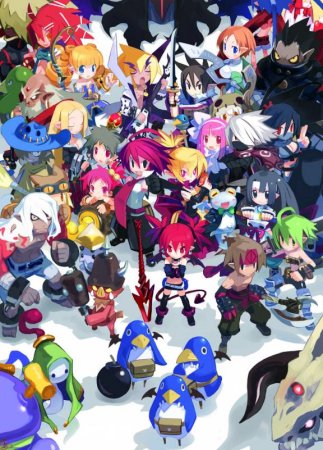
The original Disgaea might have the more memorable cast of characters, but the gameplay was more of a grind than it needed to be. Disgaea 2 rebalances things a bit, making for a more enjoyable experience that’s still in keeping with the style and atmosphere of a Nippon Ichi SRPG.
Nippon Ichi’s plots are always riddled with silliness and hyperbole, but at its heart Disgaea 2 presents a decent cast of characters, and even fits in an unexpected twist later on. Battles are tough but manageable, and for those who love to grind there are plenty of extra challenges to unlock, plus Level 9999 to strive for. You can play through the game once and get a lot out of the experience, or you can spend countless hours levelling up and building the ultimate dream team. You also get a quirky but energetic soundtrack, cameos from Disgaea 1 characters, and more prinnies than you throw, well, another prinny at.
15. Ratchet and Clank 3
I love all of the original Ratchet and Clank trilogy – and have had fun with some of the other games as well – but I decided to focus on the third game for this article. Just as Ratchet and Clank 2 improved on the original, so too does this game go one further. Ratchet’s already impressive access to weapons and gadgetry is further improved here, with weapons now earning experience and levelling up. Extra modes such as Captain Qwark’s side scrolling levels and the battle arena all help to make this a well-rounded game. And I’d be remiss not to mention Courtney Gears – the sexy robotic pop singer whose latest hit single is all about how robots should exterminate all organic life.
16. Xenosaga Episode I
Somewhere in the multiverse there exists the platonic version of the Xenosaga series, the six-game epic that was originally imagined. In our universe, however, we just have Xenogears and PS2 Xenosaga trilogy, neither of which capture that grand vision.
That being said, Episode I makes the list for not only being a decent game, but for teasing the promise of the original vison done right. Unlike Star Ocean, which boasts a sci-fi setting but generally strands its characters on primitive fantasy planets, Xenosaga immerses the player in a sci-fi world. Characters can battle as themselves, or leap into mecha for a different gameplay experience. Yes, several of the characters are pretty irritating, but this is balanced by the presence of KOS-MOS, a kick-ass android who always deserves to be on your party’s front lines.
17. Dynasty Warriors 4
The Musou series is a juggernaut that’s pumped out title after title over the years. I’ve long since given up on keeping up with them, but there was a time when I played a lot of Dynasty Warriors. With that in mind, I’ve picked out DW 4 as a formative experience.
All of the Musou games follow the same pattern – take on a named character with a particular weapon and special skills, and mow down wave after wave of enemies and enemy generals. It’s good, simple fun, with each game following the formula of the last but offering incremental improvements. The Dynasty Warriors strand in particular is based on the Chinese historical novel Romance of the Three Kingdoms, a somewhat embellished account of Chinese history at the close of the Han Dynasty.
During my time with the Musou series on PS2, I got through Dynasty Warriors 2-4, the Xtreme Legends add-ons for 3 and 4, and the original Samurai Warriors. Of those, DW4 was probably the one I enjoyed most, enhancing as it did the gameplay of 2-3, but without the tedious castle levels of Samurai Warriors.
The series is also worth a place on the list for the other interests it inspired. After learning that the characters I was playing as had a real historical basis, I sought out translations of Romance of the Three Kingdoms, and read through them with interest. This got me onto the other great Chinese novels – Outlaws of the Marsh, Journey to the West and, most recently, A Dream of Red Mansions. And people say video games don’t teach you anything.
18. Phantom Brave
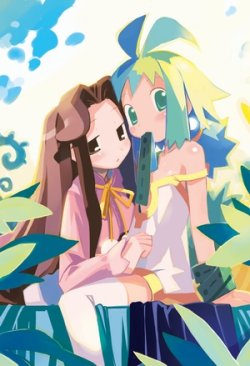
There are lots of Nippon Ichi games I could have included on here for the nostalgia factor. I mentioned Disgaea 2 earlier as probably the best of the bunch, but I’d also like to shout out to Phantom Brave, which was actually the first Nippon Ichi game I ever played.
There’s a lot wrong with Phantom Brave. The gameplay is rough around the edges, battles are frequently frustratingly difficult, and – as with every NIS game – there’s an expectation that you’re up for putting tens or even hundreds of hours into grinding.
That being said, I still have a fondness for this game. From its charming soundtrack to its bittersweet tale of a girl living alone on an island with a bunch of ghosts, I enjoyed spending time in Phantom Brave’s quirky world. With the ability to summon most units for only a limited number of turns, plus the use of movement radii rather than a grid layout, Phantom Brave stood out from the standard SRPG crowd. Sure, not all those innovations felt particularly welcome in the heat of battle, and the later Makai Kingdom pulled some of them off better, but overall I enjoyed the time I spent with this game. And it set me on a path of playing a whole raft of SRPGs, so in that sense it was truly a formative experience.
19. Persona 4
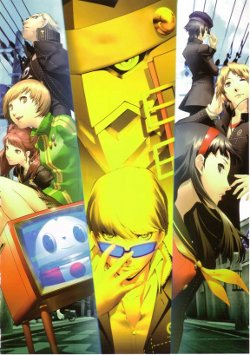
Although I’ve tried to group games together where I’ve included more than one from a series, it really felt like Persona 4 deserved a slot all to itself. For story and presentation, Persona 3 is definitely my favourite of the pair, but Persona 4 is notable simply because of all the gameplay innovations it brought to the series. No longer were all your allies solely under AI control – now you could directly command every playable character. Progress in dungeons was checkpointed more frequently, allies could learn useful support skills – even guarding, mysteriously absent in Persona 3, was now available.
Of course, a lot of these improvements were folded back into the PSP release of Persona 3, meaning that you can have the best of both worlds if you want.
20. Jak and Daxter: The Precursor Legacy
I could have easily put another JRPG here. Perhaps another Nippon Ichi title, or an Ar Tonelico game, or even Star Ocean 3 – all games I enjoyed. However, I wanted to also acknowledge a platformer that I spent a fair amount of the early PS2 days beating – the original Jak and Daxter.
Having left Crash Bandicoot in the hands of other developers, Naughty Dog moved onto their next IP – the tale of a silent protagonist whose best friend gets turned into a wisecracking furry weasel. With Daxter at his side, Jak travels the length and breadth of the land, in a game that swapped linear levels for more open exploration.
To be fair, Jak and Daxter isn’t even a major standout as a game, but at the time, it offered a solid dose of platforming fun for a new system. Where existing franchises such as Crash Bandicoot and Spyro the Dragon failed to produce playable games for the PS2, Jak and Daxter was brightly coloured, fun, and well-programmed. Want sidequests and collectibles? Enjoy racing sections and the obligatory fishing minigame? Jak and Daxter has got you covered.
Inevitably, Jak and Daxter spawned sequels of its own – most notably the GTA-esque Jak II, set in a gritty, edgy, future, and Jak III, which took the action to the desert. Although these games featured more sophistication in their gameplay systems, they also ditched the simple charm of the original in favour of endless quests and tough driving sequences. Sometimes less is more.
